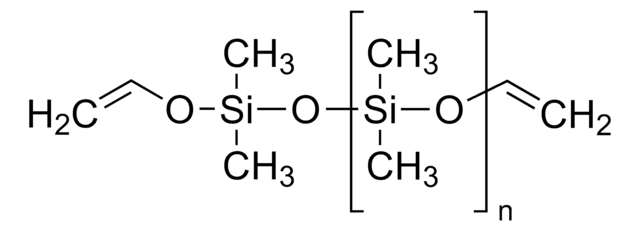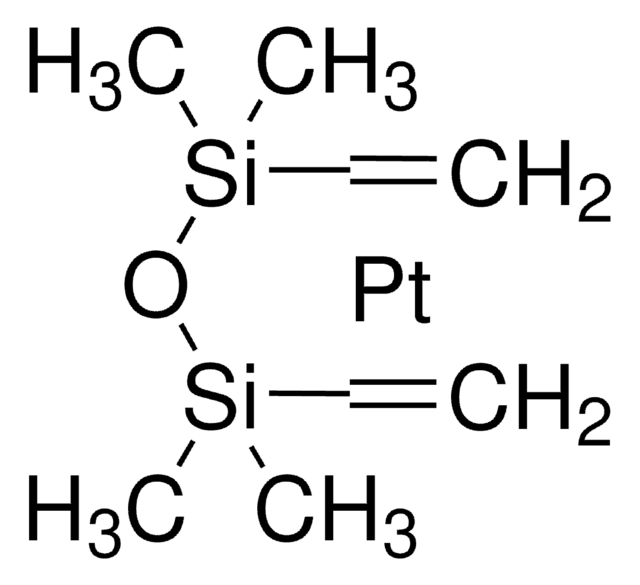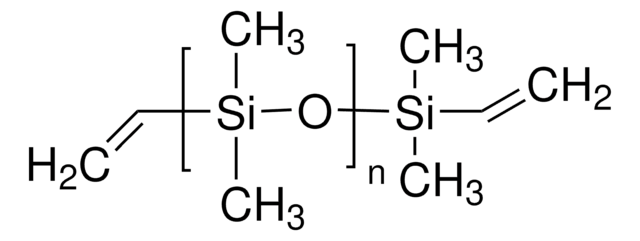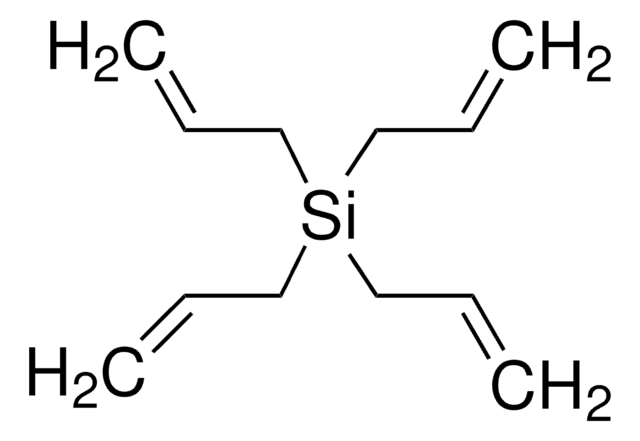396281
2,4,6,8-Tetramethyl-2,4,6,8-tetravinylcyclotetrasiloxane
Sinônimo(s):
2,4,6,8-Tetraethenyl-2,4,6,8-tetramethylcyclotetrasiloxane
About This Item
Produtos recomendados
forma
liquid
índice de refração
n20/D 1.434 (lit.)
pb
111-112 °C/10 mmHg (lit.)
pf
−44 °C (dec.) (lit.)
densidade
0.997 g/mL at 25 °C (lit.)
cadeia de caracteres SMILES
C[Si]1(O[Si](C)(O[Si](C)(O[Si](C)(O1)C=C)C=C)C=C)C=C
InChI
1S/C12H24O4Si4/c1-9-17(5)13-18(6,10-2)15-20(8,12-4)16-19(7,11-3)14-17/h9-12H,1-4H2,5-8H3
chave InChI
VMAWODUEPLAHOE-UHFFFAOYSA-N
Descrição geral
Aplicação
- Cyclic siloxanes conjugated with fluorescent aromatic compounds as fluoride sensors: This study explores the use of cyclic siloxanes conjugated with aromatic compounds for sensing applications, offering a pathway for academic chemists interested in sensor technology and fluorescence studies (N Prigyai et al., 2020).
- Synthesis, film morphology and performance of novel crosslinked polysiloxane with end-capped epoxy groups on cotton substrates: This article examines the chemical modification of cotton substrates using polysiloxane derivatives, which can be crucial for developing advanced textile coatings (L Hao et al., 2014).
- Stabilizing Li-rich layered oxide cathode interface by using silicon-based electrolyte additive: This research investigates the use of a silicon-based additive derived from 2,4,6,8-tetramethyl-2,4,6,8-tetravinylcyclotetrasiloxane to enhance the stability of lithium-rich cathodes, important for chemists working with energy storage technologies (T Huang et al., 2024).
Palavra indicadora
Danger
Frases de perigo
Declarações de precaução
Classificações de perigo
Repr. 1B
Código de classe de armazenamento
6.1C - Combustible acute toxic Cat.3 / toxic compounds or compounds which causing chronic effects
Classe de risco de água (WGK)
WGK 1
Ponto de fulgor (°F)
190.4 °F - closed cup
Ponto de fulgor (°C)
88 °C - closed cup
Equipamento de proteção individual
Eyeshields, Gloves, type ABEK (EN14387) respirator filter
Escolha uma das versões mais recentes:
Já possui este produto?
Encontre a documentação dos produtos que você adquiriu recentemente na biblioteca de documentos.
Os clientes também visualizaram
Nossa equipe de cientistas tem experiência em todas as áreas de pesquisa, incluindo Life Sciences, ciência de materiais, síntese química, cromatografia, química analítica e muitas outras.
Entre em contato com a assistência técnica










